Gone are the days of Mad Men when a secretary would attend your meeting to take notes.
Permission to pour yourself a scotch and have her type away on her typewriter, but honestly, their time could be used more wisely now.
Drumroll, please…
Get ready to revolutionize the way you take notes because Fathom.ai is here to transform your note-taking game! Whether you're a student, a professional, or someone who loves staying organized, Fathom.ai's cutting-edge technology will blow you away. Let's dive into what makes Fathom.ai's notetaking capabilities so special and how they can make your (and your secretary’s) life easier.

Fathom.ai isn’t just another tech company; it’s a powerhouse in the world of artificial intelligence. They’re on a mission to make advanced technology accessible and incredibly useful for everyone. Their notetaking features are designed to be smart, intuitive, and, most importantly, incredibly efficient.

Here’s why we’re head over heels for Fathom.ai’s notetaking capabilities and why you will be too:
Gone are the days of sifting through pages of notes to find the key points. Fathom.ai’s intelligent summarization feature extracts the most important information from your notes, giving you concise, easy-to-digest summaries. It’s like having a personal assistant who highlights the crucial bits for you.
Taking notes during a meeting or lecture? Fathom.ai’s voice-to-text capabilities are second to none. Just speak, and Fathom.ai transcribes your words with incredible accuracy. No more missing important details because you couldn’t write fast enough.
Say goodbye to messy notebooks and scattered documents. Fathom.ai organizes your notes beautifully, making them easy to navigate and search. Need to find that important point from last week’s meeting? Just type a keyword, and Fathom.ai will pull up exactly what you need in seconds.
Collaborating with a team? Fathom.ai’s notetaking features include real-time collaboration, allowing multiple users to simultaneously contribute to the same document. Whether you're brainstorming ideas or finalizing project details, everyone stays on the same page—literally.
Fathom.ai goes beyond just capturing notes; it provides valuable insights and suggestions based on your content. Imagine getting prompts for follow-up actions or additional resources related to your notes. It’s like having a super-smart study buddy or project manager built right in.

Wondering how Fathom.ai’s notetaking capabilities can fit into your world? Here are a few scenarios where Fathom.ai can take the lead:
For students, Fathom.ai is a game-changer. It helps you keep track of lectures, summarize complex topics, and organize study materials effortlessly. With Fathom.ai, you can focus more on learning and less on notetaking.
Professionals can use Fathom.ai to capture meeting notes, track project details, and collaborate with colleagues. Its smart summarization and organizational features ensure you never miss an important point, keeping you ahead of the game.
For creatives, Fathom.ai offers a seamless way to jot down ideas, brainstorm with teams, and keep all your thoughts organized. It’s the perfect tool to help you stay inspired and productive.
Don’t just take our word for it—here’s what some users are saying about Fathom.ai’s notetaking capabilities.
Sarah, a university student, says, “Fathom.ai has completely transformed my study routine. The voice-to-text feature is a lifesaver during lectures, and the smart summarization helps me review my notes quickly before exams.”
Meanwhile, John, a project manager, notes, “Our team meetings have never been more productive. The real-time collaboration feature means everyone’s input is captured accurately and instantly, saving us so much time and hassle.”
It’s clear that Fathom.ai is making a real difference in people’s lives. Read dozens of testimonials here.
We know how important it is to keep your notes safe and secure. Fathom.ai is built with robust security measures to ensure your data is protected at all times. With end-to-end encryption and strict privacy policies, you can trust that your information remains confidential. Plus, Fathom.ai offers customizable access controls, so you can decide who sees what. Whether you’re storing sensitive business documents or personal study notes, Fathom.ai gives you peace of mind.

Imagine combining Fathom.ai's robust notetaking capabilities with Zoho's comprehensive suite of tools—together, they create an unstoppable productivity powerhouse.
By integrating Fathom.ai's advanced AI-driven notetaking and summarization features with Zoho's extensive range of business applications, you can streamline your workflows like never before. Capture and organize your meeting notes with Fathom.ai, then seamlessly sync them with Zoho Projects for efficient task management. Use Zoho CRM to directly attach detailed client notes and insights to customer profiles. This synergy boosts your productivity and ensures all your crucial information is interconnected and easily accessible, making your business operations smoother and more effective.
Our team can help you wield the power of Fathom.ai with the intuitive benefits of Zoho! New to Zoho? Check out our blog to go for a deep dive!

We’re just scratching the surface of what Fathom.ai’s notetaking capabilities can do. As they continue to innovate and expand, the possibilities are endless. Imagine a world where notetaking is not just a task but a powerful tool that enhances your productivity and creativity. That’s the future we’re heading towards with Fathom.ai.
So, whether you’re a student looking to ace your exams, a professional aiming to boost your productivity, or a creative mind seeking better organization, Fathom.ai’s notetaking features have got you covered. Stay tuned because the best is yet to come.
Here’s to smarter, more efficient notetaking with Fathom.ai!
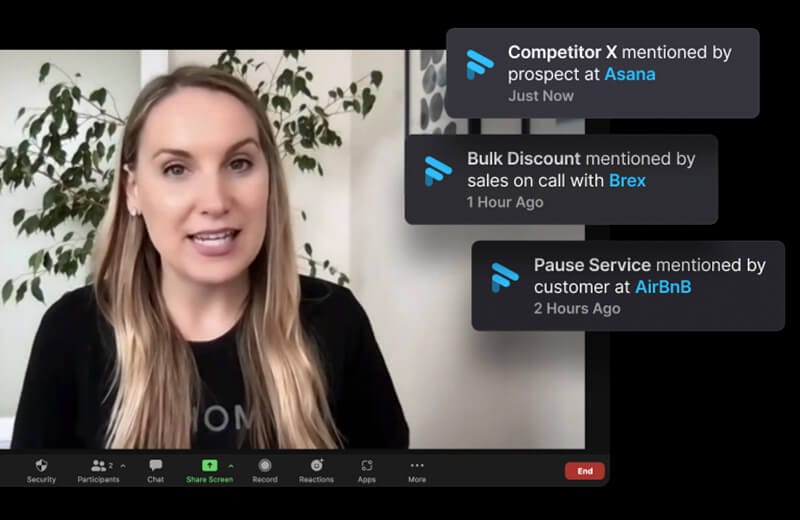
Ready to experience the future of notetaking?
Getting started with Fathom.ai is a breeze. Simply sign up, and you’ll be up and running in no time. A User-friendly interface and comprehensive tutorials make it easy to dive right in and start capturing notes like a pro. Plus, with ongoing updates and support, you’ll always have access to the latest features and improvements. Join the Fathom.ai community today and see how smart notetaking can transform your productivity and organization.
Are you looking for custom solutions for your business? Our team of experts will help you find the right platforms for your business needs. Book a complimentary call.
Two prominent names often stand out in the realm of customer support and engagement: Zoho SalesIQ and Zendesk. Both platforms offer robust solutions for businesses seeking to enhance customer service, streamline communication, and drive sales. However, choosing between the two can be challenging without clearly understanding their features, benefits, and limitations.
In this blog post, we'll compare Zoho SalesIQ and Zendesk across various aspects to help you make an informed decision for your business.

Before we see these platforms fight it out, let’s take a look at Zoho SalesIQ and Zendesk.
Zoho SalesIQ is a comprehensive live chat and visitor tracking software designed to empower businesses with real-time insights into website visitors' behavior and preferences. It offers features such as live chat, visitor tracking, lead scoring, and analytics, all integrated seamlessly with Zoho's suite of business tools.
Zendesk is a customer service and engagement platform that provides various solutions, including help desk software, live chat, knowledge base, and customer relationship management (CRM) tools. It aims to centralize customer interactions across multiple channels, streamline support workflows, and improve overall customer satisfaction.

Who will win the side-by-side features round? Whether you’re a small or medium-sized business, both platforms are robust for your sales needs.
- Live Chat: Engage with website visitors in real-time, answer their queries, and provide personalized assistance.
- Visitor Tracking: Monitor visitor activity on your website, track their journey, and gain insights to optimize engagement.
- Lead Scoring: Identify and prioritize high-potential leads based on their interactions and behavior.
- Analytics: Measure key metrics such as chat volume, response times, and customer satisfaction to drive continuous improvement.
See the full list of Zoho SalesIQ features here.

- Help Desk: Manage customer support tickets, automate responses, and track resolution progress.
- Live Chat: Offer real-time chat support directly from your website or mobile app.
- Knowledge Base: Create a self-service portal with articles, FAQs, and guides to empower customers to find solutions independently.
- CRM Integration: Centralize customer data, interactions, and support history to provide personalized experiences.
Learn more about Zendesk here.

How does Zoho SalesIQ integrate with your current platforms? Is Zendesk up for collaborating with your daily business operations? We set out to find out!
- Seamlessly integrates with other Zoho products, including Zoho CRM, Zoho Desk, and Zoho Analytics.
- Offers API access for custom integrations with third-party applications and platforms.
- Integrates with a wide range of third-party applications, including CRMs, productivity tools, and e-commerce platforms.
- Provides open APIs and developer tools for custom integrations and extensions.

At the end of the day, price plays a huge role in choosing the right business tools. Here’s how Zendesk and Zoho SalesIQ stack up.
- Offers flexible pricing plans based on the number of operators and features required.
- Provides a free plan with basic features for small businesses and startups.
- Pricing is based on the selected products and the number of agents.
- Offers a range of plans, including a free trial, suitable for businesses of all sizes.
We’re glad you asked. Here’s how Zendesk and Zoho SalesIQ compare in customer support.
- Access to comprehensive documentation, tutorials, and community forums.
- Email support is available for paid plans, with options for phone support and dedicated account managers at higher tiers.
- Extensive knowledge base, community forums, and training resources.
- Offers email support, live chat, and phone support, depending on the plan.

Zoho SalesIQ and Zendesk offer powerful solutions for businesses seeking to enhance customer support and engagement efforts.
The choice between the two ultimately depends on your specific requirements, budget, and existing software ecosystem.
We highly recommend Zoho SalesIQ. If you're already invested in the Zoho ecosystem and prioritize seamless integration with its suite of products, It may be the preferred choice.
Ultimately, evaluating your business needs, testing the platforms through trials or demos, and considering factors like scalability and ongoing support are crucial steps in making the right decision for your organization's customer support strategy.
Our team can recommend the best business tools to make your daily operations run smoothly. Contact us for a consultation.
Your business needs a project management tool to keep everything running smoothly. However, where to start? Two of the biggest names in the project management tool space are Zoho Projects and Jira. Each offers a unique set of features and functionalities. Let's delve into a thorough comparison to help you navigate the nuances and make an informed decision for your team.

Zoho Projects, a part of the Zoho suite, is designed to streamline project workflows and enhance collaboration. With its intuitive interface and diverse feature set, it caters to teams of all sizes across various industries.
Developed by Atlassian, Jira initially targeted software development teams but has since evolved into a versatile tool used across different domains. Renowned for its robust issue tracking and agile project management capabilities, it offers extensive customization options to suit diverse project requirements.
Zoho Projects sets the bar high with its user-friendly interface, offering a seamless navigation experience for both beginners and experienced users alike. Its intuitive layout and straightforward design make task management and project tracking a breeze, fostering productivity and efficiency within teams.
Jira, while feature-rich, may intimidate users initially with its complex interface. However, once users acclimate to its structure and terminology, it's extensive customization options and powerful functionalities shine through, empowering teams to tailor the platform to their specific needs and workflows.

Zoho Projects boasts impressive features, including task management, time tracking, Gantt charts, and document collaboration. Its comprehensive toolset enables teams to plan, execute, and monitor projects effectively, fostering transparency and accountability throughout the project lifecycle.
In contrast, Jira excels in issue tracking and agile project management, catering primarily to software development teams. With features like customizable workflows, agile boards, and advanced reporting, it empowers teams to manage complex projects with precision and agility, making it a preferred choice for organizations with intricate project requirements.
Regarding pricing, Zoho Projects offers flexible subscription plans tailored to suit businesses of all sizes and budgets. With transparent pricing tiers and a range of features included in each plan, this platform provides excellent value for money, particularly for small to medium-sized teams seeking cost-effective project management solutions.
On the other hand, Jira's pricing structure may pose challenges for budget-conscious organizations, especially as the team expands or requires additional functionalities. While this platform offers a free tier for small teams, scaling up can incur substantial costs, making it less feasible for organizations with limited financial resources.
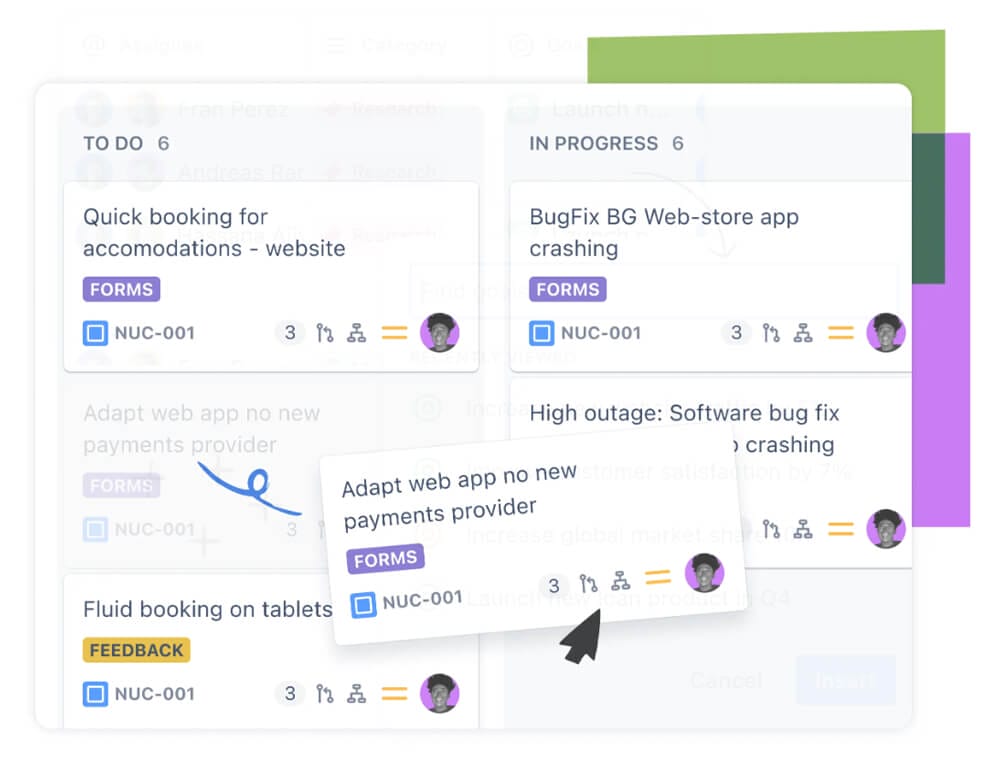
Bonus Reading: Check out our blog for all things business operations!
Both platforms recognize the importance of integrations and customization in enhancing productivity and streamlining workflows. Zoho Projects seamlessly integrates with popular tools like Slack, Google Drive, and Microsoft Office 365, facilitating collaboration and centralizing project data within one platform.
Jira, with its extensive marketplace of plugins and extensions, offers unparalleled customization options to meet diverse project requirements. Whether integrating with development tools, enhancing reporting capabilities, or automating repetitive tasks, Jira empowers teams to tailor the platform to their unique workflows and preferences.
Zoho prides itself on providing excellent customer support through various channels, including live chat, email support, and comprehensive documentation. Additionally, the Zoho community offers a platform for users to share best practices, seek advice, and connect with fellow users, fostering a collaborative and supportive environment.
Jira, backed by Atlassian's robust support infrastructure, offers a wealth of resources, including documentation, tutorials, and a vibrant user community. With access to expert support and a vast knowledge base, users can troubleshoot issues, explore advanced features, and maximize their productivity within the platform.

In an increasingly mobile-centric world, both recognize the importance of mobile accessibility in enabling teams to stay productive on the go. Zoho Projects offers dedicated mobile apps for iOS and Android devices, allowing users to manage tasks, track progress, and collaborate with team members from anywhere, anytime.
Similarly, Jira provides mobile apps for iOS and Android platforms, offering a seamless mobile experience for users to stay connected and informed about project updates, tasks, and issues. With intuitive interfaces and robust functionalities, both platforms empower teams to stay productive and engaged, whether in the office or on the move.
In the battle between Zoho Projects and Jira, there's no one-size-fits-all solution – it ultimately depends on your team's specific requirements, preferences, and budget constraints. Whether you prioritize simplicity, customization, or advanced project management functionalities, both platforms offer compelling features and benefits to cater to diverse project needs.

So, where did you land?
If Zoho is your chosen project management winner then you can get started here.
Are you feeling overwhelmed and unsure how to get your business under the Zoho umbrella?
As Advanced Zoho Partners, our team at Woggle knows a thing or ten-thousand about Zoho. We’re happy to help you with Zoho implementation.
Get in touch with our team today!
If Jira is your final answer and you’d like to chat through more solutions for other areas of your business, our team is here to help.
Happy project managing!
Hey, business owners. We get it. There are a lot of tools and integrations out there bidding for your attention and money. Which platforms are worth investing in? How do you know the best fit for your business needs?
Two prominent players stand out in the vast landscape of customer support software: Zoho Desk and Freshdesk.
Both offer a plethora of features designed to streamline customer service operations, but which one is the ultimate champion for your business? Let's dive into the ring and see how these contenders compare.
In customer support, simplicity reigns supreme. Zoho Desk and Freshdesk understand this mantra, but each approach is slightly different.
Zoho Desk prides itself on its clean and intuitive interface–enter Radar, the genius ticket management with its sleek mobile-friendly interface. Zoho Desk’s Radar makes it easy for agents to navigate and resolve tickets efficiently.
Freshdesk, on the other hand, offers a more visually appealing layout with customizable dashboards and widgets.
Winner: Tie. Both platforms excel in user-friendliness, catering to different preferences in design and layout.

Regarding features, Zoho Desk and Freshdesk come armed to the teeth. Zoho Desk boasts robust tools, including:
✅SLA automation
✅Blueprints
✅Automated time-tracking
✅Ticket management
✅Knowledge base
✅Live chat
Zia's AI-powered assistant is a game-changer, providing actionable insights and automating repetitive tasks.
Freshdesk doesn't pull any punches, either. It offers similar features, along with social media integration and gamification, to boost agent productivity. Its intuitive ticketing system and customizable automation empower agents to deliver top-notch support.
Winner: Zoho Desk takes this round with its AI-powered assistant and comprehensive automation capabilities.

In today's interconnected world, seamless integrations are essential for maximizing productivity.
Zoho Desk integrates seamlessly with other Zoho products, such as Zoho CRM and Zoho Analytics, providing a unified ecosystem for managing customer interactions. Zoho Desk also connects with external applications such as:
✅Slack
✅Salesforce
✅Jira
…and many others!
[See More]
Zoho Desk can also quickly build custom integrations using the Low-Code language Deluge. So, it can be expanded to any other 3rd party service with little effort.
Freshdesk also offers a wide range of incorporations with popular third-party apps like Slack, Salesforce, and Jira, allowing businesses to leverage their existing tools within the platform.
Winner: Well, guys! This one is a tie. Both have extensive third-party tools. As Zoho Partners (tried and true), we recommend determining which integrations your business needs and talking to our team in-depth about creating a custom solution for your business.

The pricing structure often makes or breaks a business decision, especially for startups and small enterprises.
Zoho Desk offers a straightforward pricing model, with plans starting at $12 per agent per month. This makes it an attractive option for budget-conscious businesses. Even better, Zoho Desk is included for Zoho One users!
Freshdesk offers a free plan for up to three agents and paid plans starting at $15 per agent per month. While its pricing may seem slightly higher, its feature set justifies the cost for businesses looking for advanced functionality.
Winner: Tie. Zoho Desk and Freshdesk offer competitive pricing options for businesses of all sizes.
In the world of customer support software, irony abounds regarding customer support itself. Thankfully, both Zoho Desk and Freshdesk offer excellent customer support to their users.
Zoho Desk provides 24/7 email, phone, chat, and WhatsApp support! Zoho Desk gives you even more bang for your buck with a comprehensive knowledge base, community forum, webinars, guides, and blogs.
Freshdesk also offers 24/7 email, phone, and live chat support, ensuring that help is always just a click away. Additionally, Freshdesk provides a wealth of resources, including webinars, guides, and a community forum, to empower users to get the most out of the platform.
Winner: Freshdesk wins this round with multi-channel support options and extensive knowledge resources.

There's no clear winner in the battle of Zoho Desk vs. Freshdesk. Both platforms offer robust features, intuitive interfaces, and excellent customer support. The choice ultimately comes down to your business's specific needs and preferences.
Zoho Desk may be the way to go if you're already invested in the Zoho ecosystem or value AI-powered automation. On the other hand, if you're looking for extensive third-party integrations and top-notch customer support, Freshdesk might be the better choice.
Regardless of platform, Zoho Desk and Freshdesk are formidable contenders in customer support software, ready to help you deliver exceptional customer service.
In the digital age, forms have become the unsung heroes of data collection, whether it's for surveys, registrations, or feedback. Practically every type of business uses electronic forms for their everyday business operations—from realtors to social media influencers. Among the myriad of form-building tools out there, two big contenders stand out: Zoho Forms and Google Forms.
You likely recognize Google Forms right away since the conglomerate is a household name—Hey, Google, play my ‘Breakup Songs to Make Me Cry’ playlist.
When it comes to data collection and real-time collaboration, both Zoho and Google offer intuitive interfaces and powerful features, but which one reigns supreme for your needs?
Let’s dive into the showdown between Zoho Forms and Google Forms.

Google Forms: Familiarity breeds comfort, and Google Forms certainly has that advantage. If you've ever used Google Docs or Gmail, you'll feel right at home with its clean interface and simple drag-and-drop form builder.
Zoho Forms: While Zoho Forms may not have Google's household name status, it holds its own in terms of user-friendliness. Its intuitive design and customizable templates make creating forms a breeze, even for beginners.
Google Forms: The beauty of Google Forms lies in its simplicity. It offers customization options like adding different question types, images, and themes. Plus, it seamlessly integrates with other Google apps like Sheets for easy data management.
Zoho Forms: Where Zoho Forms shines is its robust feature set. From conditional logic and approval workflows to advanced analytics and third-party integrations, Zoho Forms packs a punch when it comes to customization options.
Google Forms: Collaboration is where Google Forms truly excels. Multiple users can edit a form simultaneously, and responses are automatically synced to Google Sheets for real-time collaboration and analysis.
Zoho Forms: Zoho Forms also offers collaboration features, allowing multiple users to work on a form together. However, its collaboration tools may not be as seamless or integrated as Google's suite of apps. The magic of using Zoho Forms with other Zoho applications (i.e., Zoho CRM, Zoho Sheet, Zoho Campaigns, etc.) is unmatched.

Google Forms: The biggest selling point of Google Forms is its price tag: free. As part of Google's suite of productivity tools, Google Forms comes at no additional cost, making it an attractive option for budget-conscious users.
Zoho Forms: While Zoho Forms offers a free plan with limited features, its paid plans unlock a wealth of advanced functionalities. Pricing is tiered based on the number of users and features required, making it a more scalable option for businesses of all sizes.
Google Forms: As with all Google products, security is top-notch. Google Forms data is encrypted both in transit and at rest, and users have control over who can access and edit their forms.
Zoho Forms: Zoho takes security and privacy seriously, offering features like SSL encryption, GDPR compliance, and customizable access controls. Users can rest assured that their data is safe and secure with Zoho Forms.

There is no clear winner in the battle of Zoho Forms vs. Google Forms. It all comes down to your specific needs and preferences.
Google Forms is the way to go if you're looking for a simple, no-frills form builder with seamless integration into the Google ecosystem. It's perfect for small businesses, educators, and anyone who values ease of use and collaboration above all else.
On the other hand, if you require more advanced features, customization options, and robust security measures, Zoho Forms is the clear choice. With its extensive feature set and scalable pricing plans, Zoho Forms is ideal for businesses, organizations, and individuals who need more flexibility and control over their form-building process.
In the end, whether you're Team Google or Team Zoho, both platforms offer powerful tools to streamline your data collection efforts and make life easier.
We’re team Zoho at Woggle, and as official Zoho Partners, our team can help you get started with any Zoho application today. However, we’re client-first around here. We aren’t here to fit your business in a box. Google Forms might be the best for your business and working style. Our specialty is helping clients find the right fit for their business operations. We’ll cover the nuances of your business in a free consultation and see how we can set you up for long-term success.

Are you curious about Zoho? Our blog is packed with resources galore! Read more about 5 Game-Changing Zoho Features on our blog.
Have questions? Reach out to our team for a free consultation today!
Your daily Human Resources operations don’t have to be solely reliant on your HR Director Susan (though, we know Susan is the best).
The advantages of Human Resources software are countless, but here are just a few of the perks:
Added Bonus: Susan doesn’t have to do it all.
There are many HR software solutions to choose from, but we’re introducing you to our team’s favorite all-in-one HR management tool that saves the day every day!
Enter Zoho People.
Hey, it’s not just us. More than 30,000 businesses trust Zoho People with the central hub of their businesses. Take a peek at the massive library of case studies here.
Whether you're a small startup or a large enterprise, implementing Zoho People can revolutionize the way you handle your HR tasks. In this guide, we'll walk you through everything you need to know to for seamless implementation into your organization.

Before diving into the implementation process, let's take a quick look at why Zoho People is the go-to choice for modern businesses. Offering a comprehensive suite of HR tools, intuitive interface, customization options, and scalability, Zoho People stands out as the go-to solution for businesses of all sizes looking to streamline their HR processes effortlessly.
Zoho’s HR allstar helps businesses free up valuable time and resources to focus on what truly matters – your people and your business's growth.

Zoho People offers a comprehensive suite of HR tools, including employee database management, attendance tracking, leave management, performance appraisal, and much more – all in one centralized platform.
Say goodbye to complex systems that require extensive training. A software that boasts an intuitive interface that's easy to navigate, ensuring a smooth user experience for both administrators and employees.
Every organization has unique HR needs. With Zoho People, you can customize workflows, forms, and reports to align with your specific requirements, ensuring maximum flexibility and efficiency.
Whether you're a small team or a growing enterprise, Zoho People scales effortlessly to accommodate your changing needs, making it the perfect long-term solution for your HR management.
See for yourself how it stacks up against its competitors.

This handy check-list is your roadmap to success to implementing Zoho People in your business.
Before you start implemention, it's crucial to have a clear understanding of your objectives. What are the pain points you're trying to address? What specific HR processes do you want to streamline or improve? Take some time to identify your goals and priorities – this will guide you throughout the implementation journey.
Next, gather all relevant employee data that you'll need to input. This includes basic information such as names, contact details, employment history, and any other relevant details specific to your organization. Ensure that the data is accurate and up-to-date to avoid discrepancies later on.
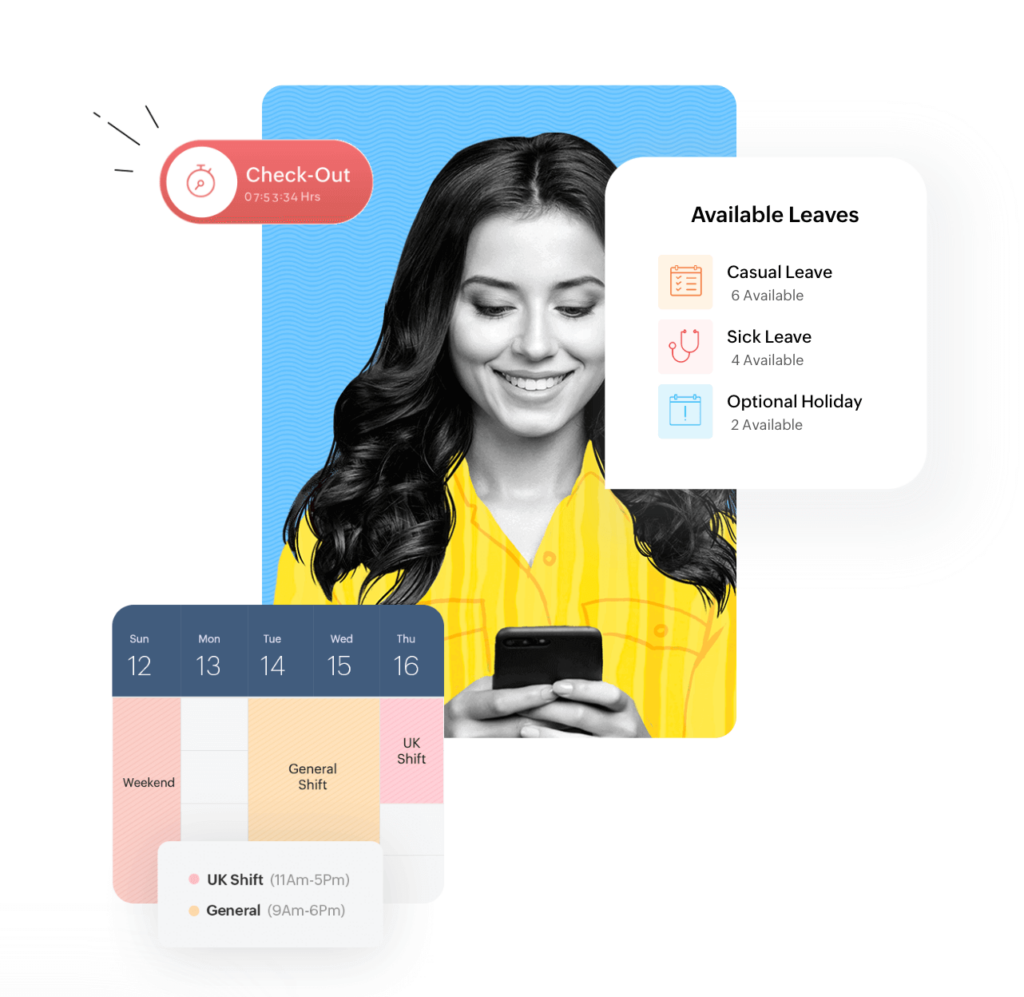
One of the key advantages of Zoho People is its flexibility and customization options. Take advantage of this by customizing your setup to suit your organization's needs. Create custom forms, workflows, and templates that align with your existing HR processes. This will ensure a seamless transition and minimal disruption to your operations.
While Zoho People is user-friendly, it's still important to provide training to your team to ensure they're comfortable using the platform. Provide comprehensive training sessions covering the various features and functionalities of Zoho People, and encourage employees to ask questions and seek clarification as needed.

Rather than implementing Zoho People across your entire organization at once, consider rolling it out gradually. Start with a pilot group or department to iron out any kinks and gather feedback before expanding to the rest of the organization. This approach will help minimize disruptions and ensure a smoother transition for everyone involved.
Once Zoho People is up and running, it's important to continuously monitor and evaluate its performance. Keep track of key metrics such as employee engagement, time and attendance, and HR process efficiency. Use this data to identify areas for improvement and optimization, and make adjustments as necessary to ensure you're getting the most out of the platform.
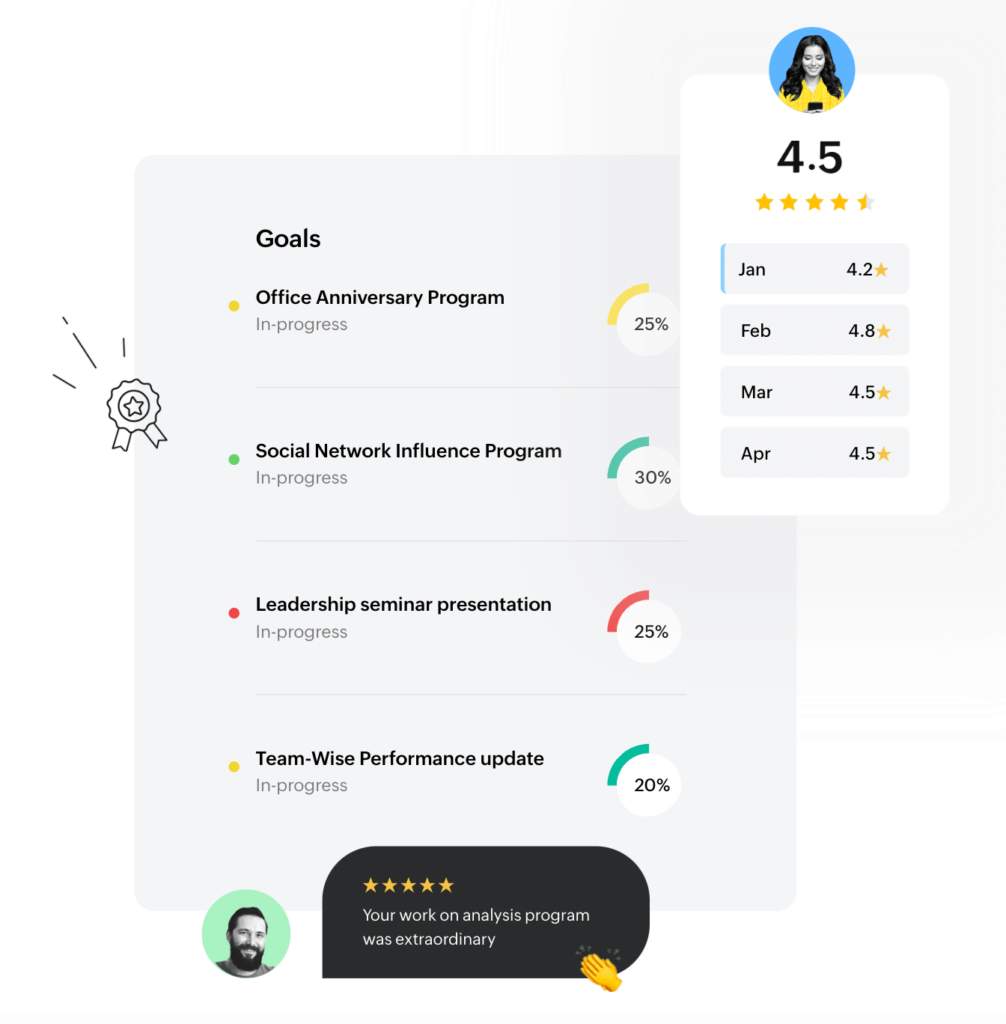
Implementing Zoho People into your organization doesn't have to be a daunting task. By following these simple steps and leveraging the platform's powerful features, you can streamline your HR processes, improve efficiency, and empower your team to focus on what they do best.
So why wait? Take the first step towards transforming your HR management with Zoho People today!
We understand that even with a step-by-step guide that sometimes it’s just nice to talk to a human. Our team of experts are available to answer your questions and offer customized recommendations for your business.
Book a complimentary consultation with Woggle.
Marketing trends are constantly evolving.
Change is the one “trend” you can count on in digital marketing. As technology continues to evolve at lightning speed, so do the preferences and behaviors of consumers.
Enter Gen Z, the digital natives born between the mid-1990s and early 2010s, who are reshaping the landscape of digital marketing and tech in general. In this blog post, we'll explore why SaaS companies need to start marketing to Gen Z and how they can do it most effectively. We reached out for a little help from our friends over at Lucent Creative Co., a woman-owned marketing agency.
Well, let's start with the basics.
Gen Z is the first generation to grow up entirely in the digital age.
They've never known a world without smartphones, social media, or on-demand streaming services.
Fun Fact: Remember the whole thing where you mailed DVDs back and forth to Netflix? Yeah, you just blew the mind of a Gen Z.
One of the key reasons SaaS companies should start marketing to Gen Z is their sheer purchasing power. Gen Z represents a lucrative market opportunity that cannot be ignored. But it's not just about their wallets; it's also about their influence.
Cue the term influencer.
Gen Z wields significant influence over household spending decisions, often playing a pivotal role in shaping the purchasing behaviors of their parents and peers. They are trendsetters, early adopters, and champions of brands that align with their values and resonate with their digital-centric lifestyles. For SaaS companies looking to gain a competitive edge, winning over Gen Z could be the key to long-term success.

Let's delve into some key insights with Kendall Walker, CEO of Lucent Creative Co.
We asked Kendall for her insight on what makes Gen Z tick, and she shared the five attributes SaaS companies should present to make a splash in the Gen Z marketing pool.
Gen Z craves authenticity above all else.
“The Gen Z demographic has little patience for brands that try to be something they're not. Honesty and authenticity are the keys to engaging Gen Z.”, Kendall shares.
SaaS companies must prioritize transparency, honesty, and genuine connection in their marketing efforts. Whether it's through user-generated content, influencer partnerships, or behind-the-scenes glimpses into company culture, authenticity should permeate every aspect of the brand's messaging.
Pro Tip: Give your email campaign a makeover for further reach. Learn more.

For Gen Z, the smartphone is their lifeline to the world—communicating, researching, shopping, and even social activism. They spend an average of over four hours per day on their mobile devices, consuming content, communicating with friends, and making purchasing decisions on the go.
“SaaS companies need to optimize their websites, apps, and marketing materials for mobile-friendly use. Failing to do that is a huge waste of time and money for SaaS companies—any business, really.”, says Lucent Creative’s CEO.

“I see a lot of resistance to keeping up with trends in marketing. The truth is, that resistance is costing businesses sales potential. You don’t have to fully align with a trend, but effort is a major way forward with Gen Z.”, Kendall shares.
Gen Z is a visual generation, raised on a steady diet of Instagram stories, TikTok videos, and Snapchat snaps.
They prefer bite-sized, visually appealing content that grabs their attention and communicates a message quickly and succinctly. SaaS companies can leverage visual storytelling techniques such as videos, infographics, and interactive multimedia to convey their value proposition compellingly and memorably. By prioritizing visual content that is both informative and entertaining, brands can effectively cut through the digital clutter and capture Gen Z's interest.
“A company aligned with a social cause is a step ahead of the competition when it comes to Gen Z. There has to be authenticity in supporting the cause. So, don’t just tie your company to a cause for the sake of clicks (remember, Gen Z can pick up on that!). Something I love most about Gen Z is their desire to make the world handed down to them a better place.”
Kendall Walker, CEO of Lucent Creative
Gen Z is acutely aware of social and environmental issues and expects the brands they support to share their values. SaaS companies should take a stand on issues that matter to Gen Z, whether it's sustainability, diversity and inclusion, or ethical business practices.
By aligning their brand with causes that resonate with Gen Z, SaaS companies can foster deeper connections and inspire loyalty among this socially conscious demographic.
Traditional sales tactics fall flat with Gen Z. They don't want to be sold to; they want to be engaged and empowered. SaaS companies should focus on building meaningful relationships with Gen Z through personalized, interactive experiences.
Whether it's hosting live Q&A sessions, facilitating user-generated content campaigns, or gamifying the customer journey, the key is to involve Gen Z in the conversation and make them feel like valued participants rather than passive consumers.
“One of my favorite aspects of marketing is helping my clients to find fun, authentic ways to engage with their audiences. It doesn’t have to be trending or even a “cookie-cutter” strategy to work. Remember, your voice as a company matters—tapping into it is just as important as your product/service.”, says Kendall.

Now is the time for SaaS companies to start marketing to Gen Z. With their unprecedented purchasing power, influence, and digital savvy, Gen Z represents a formidable force in the marketplace. By understanding their unique preferences, behaviors, and values, SaaS companies can tailor their marketing strategies to engage this dynamic demographic effectively and secure a competitive advantage in the ever-evolving digital landscape.
So, if you’re a SaaS company looking to future-proof your business and unlock new growth opportunities, it's time to shift your focus to Gen Z. Embrace authenticity, prioritize mobile experiences, leverage visual storytelling, champion social causes, and above all, engage with Gen Z on their terms.
The future of your brand depends on it.
You know we don’t leave things on such an ominous tone! Reach out to Kendall at Lucent Creative to get a hand with your marketing efforts!
Our friends at Lucent Creative, a woman-owned digital marketing agency, have a few tips for navigating marketing in 2024.
New year, new approach–it’s time to sharpen our content planning game. The days of throwing spaghetti at the wall and hoping it sticks are long gone. In this era of information overload, strategic content planning is the secret sauce for cutting through the noise and capturing your audience's attention.
So, grab your coffee, and let's embark on a journey into the future of content planning.

In 2024, it's all about understanding your audience on a personal level. Consumers are craving content that speaks directly to their needs, preferences, and pain points. Start by diving deep into your audience personas – who are they, what keeps them up at night, and how does your content make their lives better?
Leverage data analytics and social listening tools to gain insights into your audience's behavior. What are they clicking on? What are they sharing? Understanding your audience's digital footprint is key to creating content that resonates. Personalization is the name of the game, and the more you know about your audience, the better you can tailor your content to meet their expectations.
Bonus! Master your social media campaign with this blog post.
Static content is no longer enough; your audience wants to be a part of the experience. From quizzes and polls to interactive infographics and 360-degree videos, the possibilities are endless. Interactive content keeps your audience engaged and invested in your brand.
Make interactive elements a priority in your 2024 content calendar. Host live Q&A sessions, create polls on social media to gather opinions, etc. The more you can involve your audience in the content creation process, the more connected they'll feel to your brand.

In the age of information overload, quality trumps quantity. In 2024, it's not about bombarding your audience with a constant stream of content. It’s about creating meaningful, high-quality pieces that add value. Invest time in researching and producing well-crafted content that solves problems, educates, or entertains. Whether it's a blog post, video, or podcast episode, make it worth your audience's time. Consumers are looking for substance and authenticity.
If video content wasn't at the top of your content planning list before, it should be now. Video content is no longer optional; it's essential for capturing and retaining audience attention. Whether it's short-form content for social media or long-form storytelling on YouTube, video is the medium of choice for many consumers.
Incorporate a variety of video formats into your content strategy. Think about how-to videos, behind-the-scenes glimpses, customer testimonials, and even interactive live streams. Video not only allows you to convey information more dynamically but also helps humanize your brand and establish a deeper connection with your audience.

Bonus! Read about optimizing your blog with video in 2024 here.
Search Engine Optimization (SEO) is still a crucial element of content planning in 2024. The way people search may evolve, but the importance of being discoverable on search engines remains. Keep a keen eye on emerging SEO trends, such as the rise of voice search and the continued emphasis on user experience.
Craft content with relevant keywords, but prioritize natural language and readability. Google's algorithms are getting smarter, and they're favoring content that provides a good user experience. Focus on creating content that answers questions, solves problems, and keeps users engaged – this will naturally boost your SEO rankings.
Artificial Intelligence (AI) isn't just for sci-fi movies; it's a game-changer in the world of content planning. AI can analyze data, predict trends, and even suggest optimizations for your content strategy.
Explore AI-powered tools for content creation, such as automated writing assistance or image recognition for visual content. AI can help you understand what content is resonating with your audience, predict future trends, and optimize your content strategy for maximum impact. It's like having a digital ally that guides you through the ever-evolving landscape of content creation.

From understanding your audience on a personal level to embracing interactive and high-quality content, the rules of the game are evolving. Video is king, SEO is still relevant, and the power of AI and UGC is undeniable. So, roll up your sleeves, stay agile, and embark on your content odyssey armed with the trends that will shape the narrative in 2024.
Need a hand with content in 2024? Get in touch with Lucent Creative’s team of marketing professionals.
Blog posts aren’t obsolete. If so, then we’d be wasting our time writing this and you would be wasting your time reading it, right? Writing blog posts are a great way to increase website traffic, generate leads, and showcase your expertise. Readers also get a closer look at your brand and learn to trust your validity as a service provider or eCommerce store. Of course, not all blog posts are well-written and won’t perform well in a search engine. We teamed up with our partners over at Lucent Creative, a woman-owned digital marketing agency, to bring you the best tips on writing blog posts that convert.
We asked Lucent Creative’s copywriter and content writer Nikki for more insight on the five mistakes to avoid when writing blog posts.

Just because your blog post covers a wide subject doesn’t mean it will pique the interests of a wider audience. Know your ideal reader, or target audience, and create content exclusively for them.
Nikki shared, “It’s tempting to take a trending topic and write broadly about it. If anything, you imagine it would rank well in search engines since it’s a popular subject. The truth is, that you always want to optimize your writing for your ideal customer. There are a lot of books out there, but authors choose a genre, then a sub-genre, and then continue to specify down to the demographic they’re writing for. The same is true for writing blog posts.
Know your audience and know them incredibly well. It affects the language you use when writing, how you speak to their needs, and of course, how successfully your blog performs once it’s out in the world.”
Utilize Alt text on photos and other visuals in your post. It’s not only helpful for SEO optimization but is also considerate of your readers who may be visually impaired.
“The trick with alt text is to keep it concise. Bring out the most vital aspects of the photo with as few words as possible. Thankfully, many stock photo sites have already provided alt text for you.”, Nikki says.
The example below shows that Pexels, a stock photo and video site, provides alt text in the URL. Nikki adds, “Make sure you look at the URL or texts provided by these sites so you can optimize them for your blog. Some photos may have alt text that is too general.”

“Formatting is one of the biggest mistakes people make in their blog posts. Attention spans are short and you want your audience to get the most from your writing at a glance.”
The ideal blog post will be easy to read. Formatting is one of the most important aspects of a blog that performs well.
A call to action is crucial in creating a blog that generates leads. A confused audience won’t take the intended next steps unless you show them how.
“Make sure your CTA matches your blog topic. When writing blog posts, it’s also important to link your CTA to the appropriate page. If your blog is educating the audience on your newest app feature and your CTA is “Download Now”, but the CTA button is linked to the “About Us” page then that complicates the reader’s journey. Your audience will bail if the CTA isn’t seamless.”, Nikki instructs.
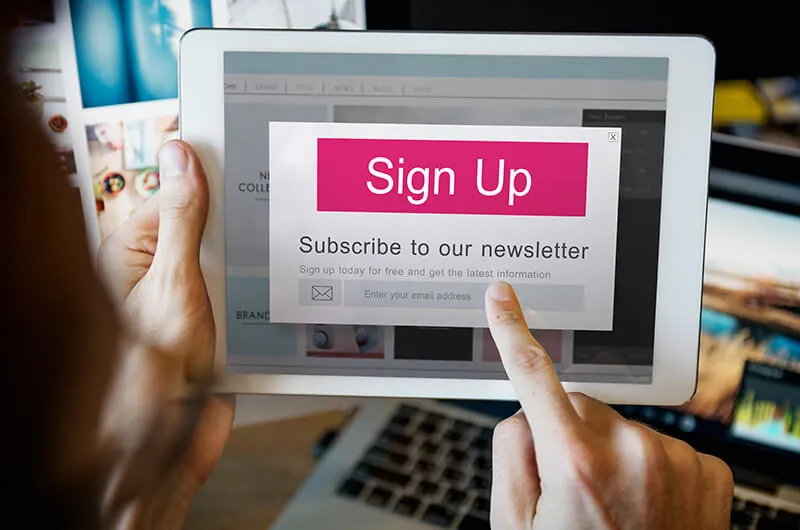
This one is huge. Include backlinks in your posts to relative information you have created in the past. Woggle does this often to optimize our posts.

Internal backlinks have multiple perks, including:
Take a moment to think through your current blog content. Are the posts optimized with internal backlinks? It’s an easy fix and we recommend taking time to implement links in your content.

If your team needs a hand optimizing current content or writing blog posts that convert, get in touch with Lucent Creative’s team.
Nikki wraps up our interview with one last gem:
“Helping business owners connect with their audiences is one of my favorite aspects of my job. They have worked hard to build something their passionate about and they deserve to foster the leads they deserve. I get it–writing blog posts is one of those business tasks people don’t necessarily look forward to or enjoy. Thankfully, I love what I do and Kendall’s team is always happy to help.”
Emails still rank at the top of the charts in marketing and are crazy-successful if you execute them correctly.
Even with new social media platforms bursting onto the scene at what seems to be daily, a good old-fashioned email campaign still performs the best. Here are a few stats from HubSpot showing just how big of a punch emails throw at the competing platforms.
These stats are proof that you have a willingly captive audience that your organization only needs to tap into.
So, how do you create an email marketing campaign that engages your audience, generates new leads, and increases revenue? Don’t worry. We reached out to our partners at Lucent Creative, a female-owned digital marketing agency, and they agreed to give you the exact formula for a wildly successful email marketing campaign!

“Casting a wide net with your email campaign isn’t the key to success. You want to be specific by setting an overall goal for each campaign.”, Lucent Creative’s Founder and CEO, Kendall Walker shares.
Here are a few examples of goals you can associate with your email campaigns:
Lucent Creative’s copywriter, Nikki Newbauer, spoke to the value of setting specific goals. “Knowing your overarching goal for the email campaign will create synchronicity for your creative team. Everyone from your copywriter to graphic designer will be on the same page which creates a clear and concise path for your readers to follow.”
Below are the general categories most email campaigns fall under.
The more specific you are with the intention of your email campaign, the more success you will have in reaching your intended audience and reaching your goal.

“Readers will either opt-in by opening your email or deleting based on the subject line. Of course, you always hope your content will be enticing enough that email subscribers will open every email from your brand, but that isn’t the case.”, Nikki added.
Pro Tip: Spruce up your email subject lines with emojis and by using the subscriber’s first name.
Here are great subject lines to stir some engagement with your emails.

Of course, you want your writing to reflect the underlying goal of the email, but nothing gets people to unsubscribe from your email list faster than impersonal content. Write for humans, not sales (or whatever your email campaign endgame is). “If you choose to use AI platforms like ChatGPT to generate your email copy, please edit with a heavy hand. AI platforms may be able to churn out copy on a whim, but the writing is typically riddled with impersonal verbiage that isn’t relatable to readers.”, Nikki stresses.
Deep-Dive: To see more of our take on ChatGPT in marketing, read this post.
Nikki gave us a few tips to follow to make your email campaign a success.
Test your emails to see what your subscribers are engaging with. Knowing how your emails are performing is vital to your email campaign’s longevity. Use an email campaign platform that allows deep-dive analytics through A/B testing. Testing your emails is an entire science in and of itself so research how to set your platform to do the hardest work for your team.

Remember, your email campaign won’t be perfect. Use analytics to learn and adjust accordingly. Emails are a great way to build rapport with leads and build brand awareness. Follow these tips and let us know how your future email campaign goes!
Please do us a favor. Reach out and let us know if you’re finding these marketing posts useful in your business. Have a suggestion? Let us know!